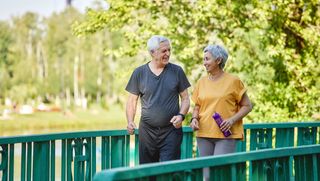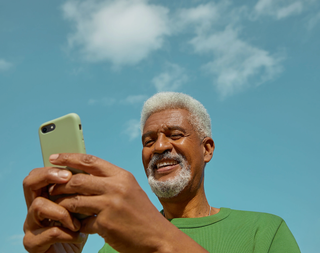Ways to introduce gentle exercise into your routine
Include light movement in your day to support health, energy and wellbeing.

Summary
Exercise has a positive effect on both your physical health and mental health. Not only is it proven to reduce your risk of developing cardiovascular disease and other health problems, but it can also improve your mental wellbeing, boost your energy, and lift your mood. Take a look at the benefits that exercise can have on your health, and how you can introduce exercise into your routine and become more active.
The benefits of exercise
Regular exercise can have a multitude of benefits for your health, including:
- Lowering cholesterol levels.
- Lowering blood pressure.
- Reducing the risk of developing type 2 diabetes.
- Reducing the risk of heart disease.
- Improving your mental wellbeing.
- Improving sleep quality.
- Building strength.
- Boosting circulation.
Exercise can also have benefits for your eye health, including:
- Increasing blood flow to the optic nerve and retina.
- Encouraging healthy blood vessels in the eyes and reducing the growth of abnormal blood vessels.
- Reducing intraocular pressure.
- Reducing the risk of developing eye conditions like age-related macular degeneration, glaucoma, cataracts, and diabetic retinopathy, or reducing the risk of eye conditions progressing.
How often should I be exercising?
The Australian government recommends that people over the age of 65 should do at least 30 minutes of moderate intensity physical activity every day. This means exercise that will increase your heart rate and breathing, so you should still be able to talk but not sing.
For people with vision loss, this can be particularly challenging. There may be some barriers holding you back from participating in exercise, such as limited access to transport, fear of injury or falling over, or a lack of mobility.
We’ve compiled some tips to help you introduce physical activity into your everyday life and break these barriers to exercise for those with vision loss.
Tips for getting more active
- Speak with your doctor before starting any physical activity. Your doctor can recommend the types of exercise that are best suited to you and your personal circumstances.
- Set achievable goals. This can be as simple as increasing your number of steps during the day or aiming to do a bit of exercise every day.
- Exercising with a friend can help you to feel more motivated to exercise. It could also help you to feel more confident to exercise if you have someone to guide you.
- Find a type of exercise that works for you and keeps you motivated.
- Start simple. You could start by doing 10 minutes of exercise one day a week and then increasing it once you feel more confident.
Simple chair exercises
Now that you are ready to start incorporating physical activity into your routine, here are some simple chair exercises to get started.
Shoulder rolls
In a circular motion, lift your shoulders up and then roll them backwards, downwards, and forwards. Repeat this five times, then reverse the direction and repeat it five more times. This can improve flexibility and posture.
Heel and toes raises
Sitting in your chair, lift your heels with your toes still on the ground. Then lower your heels and lift your toes up. Repeat this for about 30 seconds. This can help to improve your circulation and warm up your ankles for walking.
Sit and stand
Start seated on your chair, then stand up slowly. Then sit back down. Repeat this eight to 10 times. This can help to improve your balance and make it easier to get in and out of a chair. If you struggle with balance, you can hold onto something in front of you, like a table or chair.
Rowing
Clasp both hands together and reach out in front of you. Then bring your arms back to your side. Reach out your arms in front of you again, then pull them back to your other side. It should look like you’re rowing a boat. Repeat this for about 30 seconds. This can help to improve your circulation and stretch your muscles in your arms, shoulders, chest, and back.
For more information
- Take a look at our tips for exercising at home.
- Always speak to your GP and eye care professional about the best treatment options for you.
Did you find this article helpful?
Share your thoughts and help us make our resources better for everyone.
Enjoying the content?
Start building your profile to access personalised support, resources, and tools tailored to your eye health journey.
